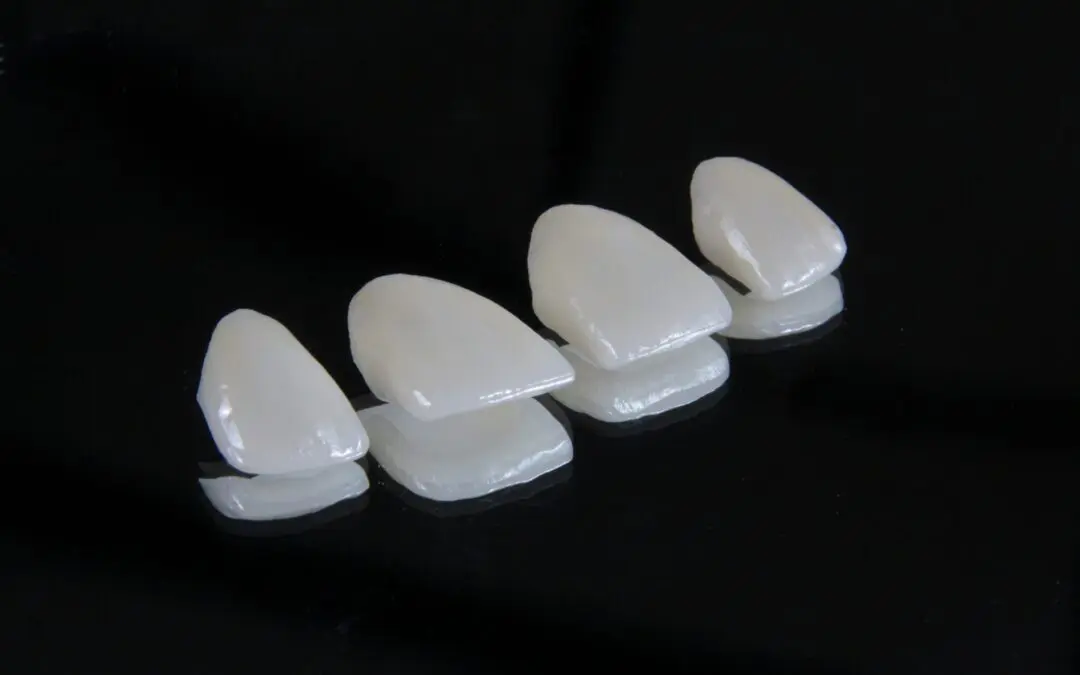If you’re thinking about fixing a chipped tooth, closing a small gap, or brightening discoloured teeth, you’ve probably come across two popular cosmetic dental procedures: dental bonding and veneers. Both can improve the way your smile looks, but each works a little differently and accommodates different needs, lifestyles, and budgets.
So what’s the quick answer? If you want a fast, more affordable fix for minor repairs or cosmetic concerns, dental bonding might be your best option. If you’re looking for a more dramatic and long-lasting transformation, veneers, especially porcelain ones, may be the way to go. Still not sure? Let’s go into a little more detail.
What Is Dental Bonding?
Dental bonding is a simple and effective way to fix chipped or cracked teeth, discoloured teeth, or misshapen teeth. During a dental bonding procedure, your dentist applies a tooth-colored composite resin to the tooth’s surface. The bonding material is shaped, hardened with a special light, and polished so it blends in with your natural teeth.
It’s called composite bonding because the material bonds directly to your teeth. This type of treatment is great for minor imperfections, affordable compared to veneers, and usually completed in just one visit. That’s why it’s sometimes referred to as complete dental bonding.
What Are Veneers?
Dental veneers are custom-made shells that cover the front surface of your teeth. There are two main types: porcelain veneers and composite veneers. Porcelain gives a more natural appearance and is stronger and more stain-resistant, while composite resin veneers can be applied in fewer visits and are usually more affordable.
Unlike bonding, veneers often require minimal tooth preparation, which means your dentist may need to remove a thin layer of tooth enamel. In most cases, temporary veneers are placed while your permanent ones are being made at a dental laboratory.
Because veneers can correct severe discoloration, misshapen teeth, or even missing teeth (when used with other restorative procedures), they’re a great option for patients wanting a more dramatic transformation.
At Fallowfield Dental, we offer dental bonding to fix everything from a chipped tooth to a small gap between multiple teeth. It’s fast, painless, and usually doesn’t require a local anesthetic. For those who want a more dramatic change, you can also book a dental veneer consultation.
Bonding vs Veneers: Key Differences
Here are a few things to keep in mind when comparing bonding and veneers:
- Cost: Teeth bonding is usually more affordable, especially when only a few teeth need work.
- Durability: Porcelain veneers last longer than bonding but often cost more.
- Looks: Veneers, especially porcelain, tend to look slightly more natural.
- Time: Bonding can usually be done in one appointment. Veneers may take multiple appointments.
- Tooth prep: Bonding is minimally invasive, while veneers might require some enamel removal.
How to Choose What’s Right for You
Choosing between dental bonding vs veneers depends on your cosmetic concerns, oral health, and budget. If you’re dealing with small chips, gaps, or stains, bonding could be enough. Composite and porcelain veneers may be a better fit if you want to reshape your smile completely.
Our cosmetic dentists at Fallowfield Dental are happy to suggest treatments based on your needs. We always put your comfort first and work with you to create a natural-looking smile using the latest cosmetic dental procedures.
If you’re covered under the CDCP (Canadian Dental Care Plan), we’re proud to be a CDCP dentist in Ottawa, and we’ll help you explore which dental treatments are covered.
Caring for Bonded or Veneered Teeth
Bonded and veneered teeth need proper care, just like healthy teeth. Avoid biting hard objects, brush and floss daily, and come in for regular checkups. With the right care, your bonded teeth can last years, and permanent veneers can last even longer.
If you’re dealing with gum disease or other dental issues, those will need to be treated first. Cosmetic dental treatments work best on a foundation of good dental health.
FAQs
Which is better, bonding or veneers?
It depends on your needs. Bonding is great for small cosmetic fixes and is usually more affordable. Veneers last longer and offer more dramatic results, especially for bigger cosmetic changes.
What looks more natural, bonding or veneers?
Porcelain veneers usually look the most natural because they reflect light like real enamel. Bonding still looks great, especially when done well, but it may not last as long or resist stains as well.
How long does teeth bonding last?
With proper care, bonding can last 5 to 10 years, sometimes longer. It may need touch-ups over time.
Which is more expensive, veneers or composite bonding?
Veneers, especially porcelain, are more expensive. Composite bonding is generally more budget-friendly.
Is there a cheaper option than veneers?
Yes! Dental bonding is a great, affordable alternative for many people. It’s ideal for minor repairs and quick cosmetic fixes.
Small Fix or Big Change—We’re Here to Help
Ready to talk about your smile? Book a visit at Fallowfield Dental in Ottawa. We’ll walk you through all your options and help you feel confident every step of the way.

